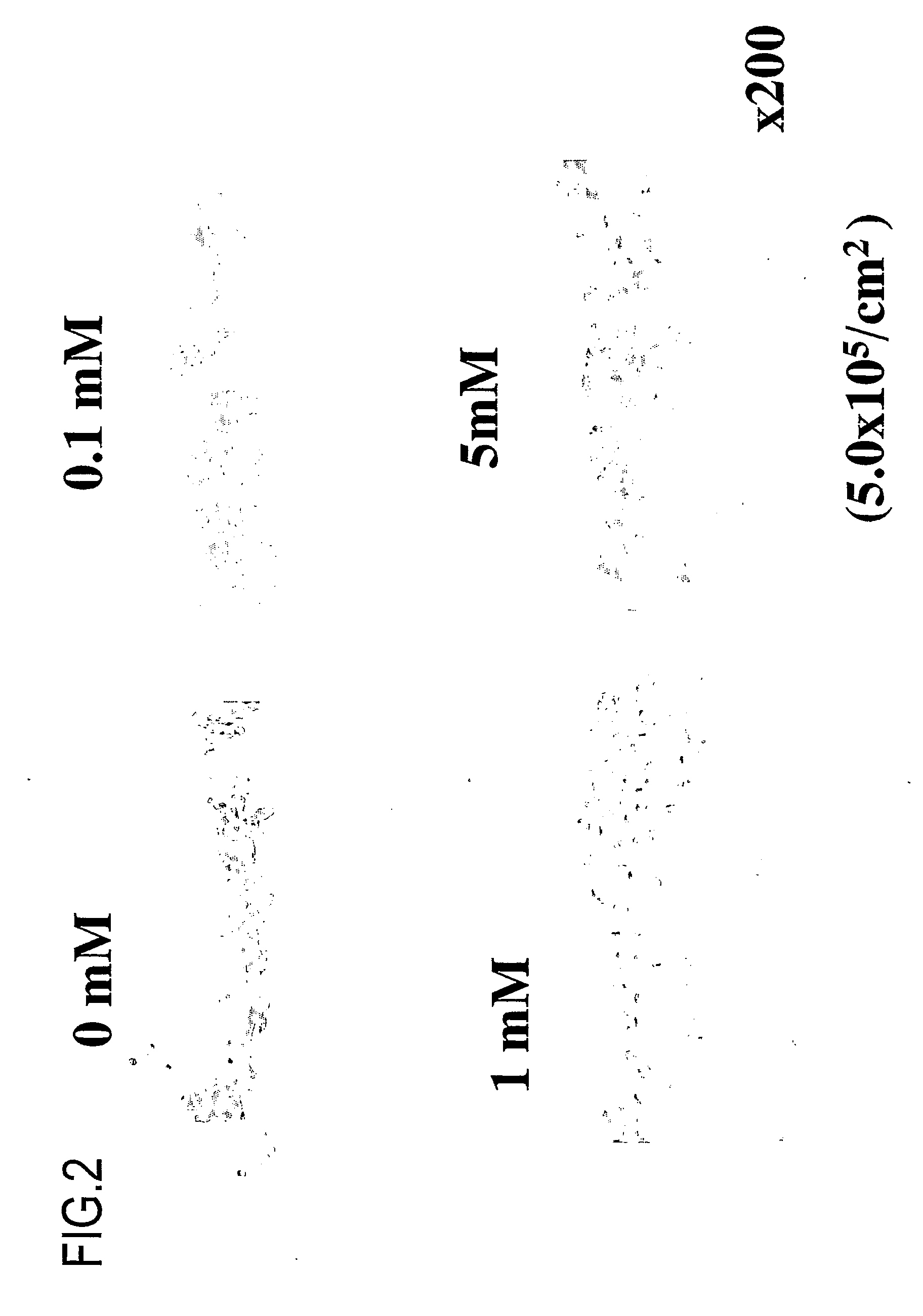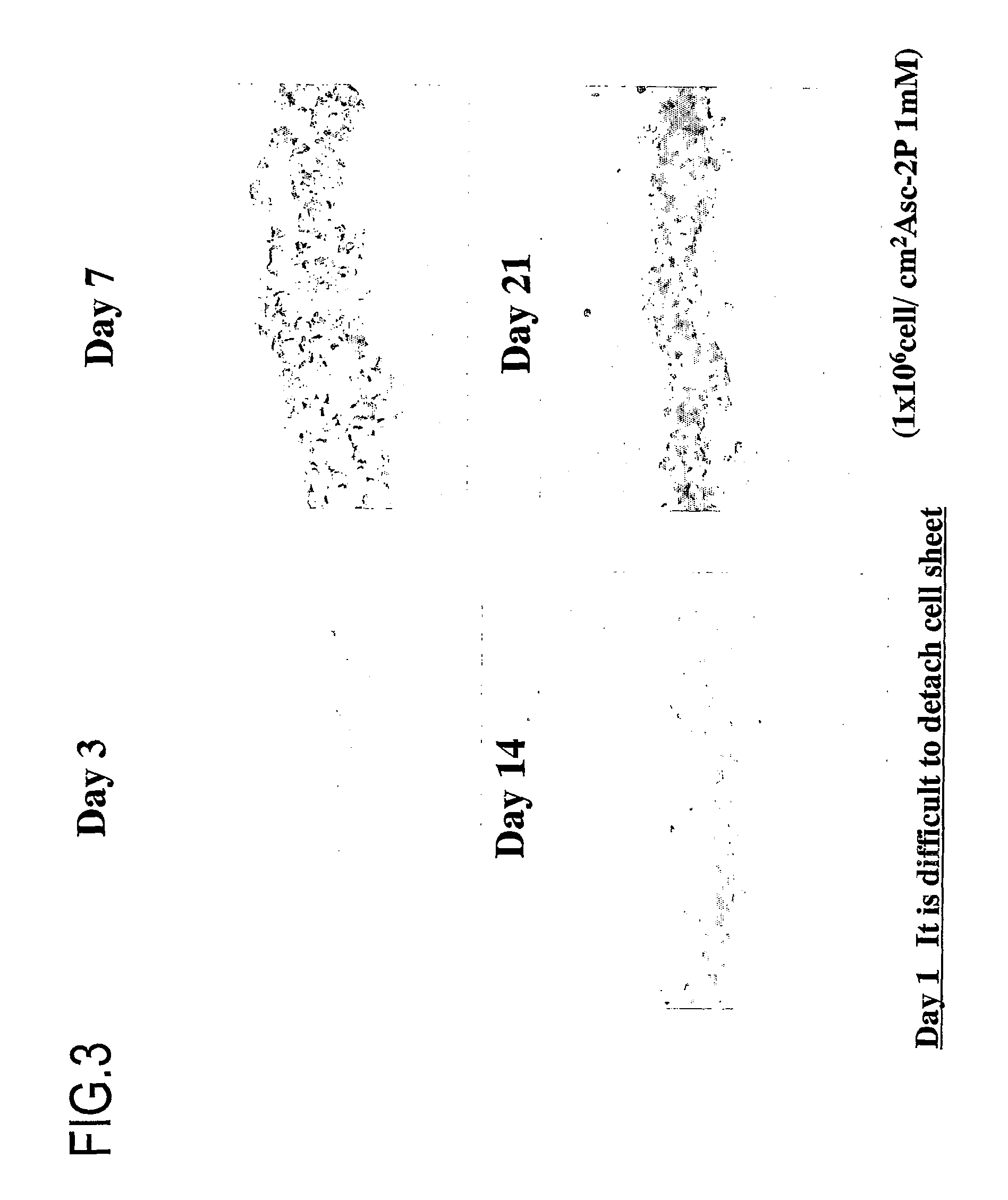Scaffold-free self-organized 3D synthetic tissue
a self-organized, 3d technology, applied in the field of regenerative medicine, can solve the problems of insufficient prediction of the influence of organism safety, fragile single sheet obtained by this technique, and insufficient provision of extracellular matrix, so as to achieve reliable and safe cell implantation
- Summary
- Abstract
- Description
- Claims
- Application Information
AI Technical Summary
Benefits of technology
Problems solved by technology
Method used
Image
Examples
example 1
[0416]In this example, various synovial cells were used to produce a synthetic tissue as follows.
[0417]
[0418]Synovial cells were collected from a knee joint of a pig (LWD ternary hybrid, 2-3 months old upon removal of cells), followed by treatment with collagenase. The cells were cultured and subcultured in 10% FBS-DMEM medium (FBS was obtained from HyClone, DMEM was obtained from GIBCO). It has been reported that 10th passage synovial cells still have pluripotency. Although cells of 10 or less passages were used in this example, cells of more than 10 passages may be used depending on the application. Autotransplantation was performed for humans, where a sufficient number of cells were used and the cells were cultured for a short period of time so as to reduce the risk of infection or the like.
[0419]Considering these points, cells of various passages were used. Actually, primary culture cells, first passage cells, second passage cells, third passage cells, fourth passag...
example 2
Measurement of Collagen Production
[0437]Next, it was determined whether or not collagen (extracellular matrix) is sufficiently secreted after implantation of a synthetic tissue of the present invention. The following protocol was used.
[0438]
[0439]Culture periods: 3 days, 7 days, 14 days, and 21 days,
[0440]Concentrations of ascorbic acid 2-phosphate: 0 mM, 0.1 mM, 1 mM, and 5 mM
[0441]Under the above-described conditions, a synovial membrane-derived synthetic tissue was produced.
[0442]6 N HCl was added to culture medium for the synthetic tissue, followed by hydrolysis at 105° C. for 18 hours. The medium was oxidized with chloramine T. Thereafter, the synthetic tissue was subjected to color development using Ehrlich's Reagent Solution (2 g of p-dimethylamino-benzaldehyde+3 ml of 60% perchloric acid; isopropanol was diluted at 3:13), followed by measurement of absorbance.
[0443]
[0444]1) The quantities of collagen produced was dependent on the ascorbic acid concentration in the following ...
example 3
Influences of the Size of a Dish, the Number of Cells, and the Number of Passages
[0446]Next, influences of the size of a dish and the number of passages were investigated.
[0447]FIG. 9 shows the formation of synthetic tissues where the number of cells and the number of the passage were changed. A synthetic tissue was formed in all concentrations tested.
[0448]Under the conditions of the above-described Example 1, a similar experiment was conducted where the sizes of dishes were 35 mm, 65 mm, and 100 mm and the number of passages were 5 to 7 (FIG. 10).
[0449]The results are shown in FIGS. 9 and 10. FIG. 9 shows the states of synthetic tissues, where the number of passages was changed. FIG. 10 shows the states of synthetic tissues, where the size of a dish was changed. As can be seen from the figures, it was demonstrated that a synthetic tissue can be formed using any size of dish and any number of passages.
[0450]As shown in FIG. 9, basically, a greater number of cells may be preferable ...
PUM
| Property | Measurement | Unit |
|---|---|---|
| thickness | aaaaa | aaaaa |
| strength | aaaaa | aaaaa |
| shape | aaaaa | aaaaa |
Abstract
Description
Claims
Application Information
 Login to View More
Login to View More - R&D
- Intellectual Property
- Life Sciences
- Materials
- Tech Scout
- Unparalleled Data Quality
- Higher Quality Content
- 60% Fewer Hallucinations
Browse by: Latest US Patents, China's latest patents, Technical Efficacy Thesaurus, Application Domain, Technology Topic, Popular Technical Reports.
© 2025 PatSnap. All rights reserved.Legal|Privacy policy|Modern Slavery Act Transparency Statement|Sitemap|About US| Contact US: help@patsnap.com



